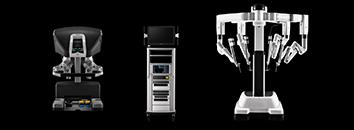Department of Urology And Urogynaecology

Urology deals with the conditions and diseases of the urinary tract, such as urinary bladder, urethra and ureters. When it comes to medical conditions related to prostate health, kidney cancer, bladder cancer, overactive bladder (incontinence), impotence, urinary tract infections, vasectomies, kidney stones and other urological conditions, you need the help of an expert urologist who has the best diagnostic equipment to help patients.
At the Institute of Urology, you will find the best urologist in India offering comprehensive urology services to diagnose and treat kidney stone disease and urinary tract difficulties. Equipped with a direct lithotripter for ESWL for kidney, ureteric calculi and laser for stone diseases, the institute offers the best urology diagnosis and treatment.
The well-furnished labs and wards have made it easy for the patients to receive proper care and service from the team. A strong inter-professional team promotes a collaborative approach to problem-solving.
The quality improvement team is finding new ways to provide the best care to the patients for a healthy life. The unit has a staff of well-trained graduated nurses to maintain quality care for every patient.
A Urogynecologist is a Gynaecologist who has undergone fellowship training to specialize in treating women with a variety of Pelvic Floor Disorders. Before the speciality was created, women with Pelvic Floor Disorders typically had to visit multiple specialists who treated their Pelvic support, and Urinary, and Gastrointestinal problems separately. However pelvic floor components work together as a unit and not independently. Hence the Urogynecologist provides integrated comprehensive care for Bladder, Bowel, and support problems of the pelvic floor.
You should see (or be referred to) a Urogynecologist when you have problems of Prolapse, and/or troublesome urinary or faecal incontinence or when your primary doctor recommends consultation. Other problems for which you or your doctor might think about consulting a Urogynecologist include problems with emptying the bladder or rectum, pelvic pain or bladder pain, fistulas, and the need for special expertise in Vaginal Surgery, in short, for any of the problems listed above.
TREATMENT
The Department of Urogynaecology at Gleneagles Hospitals, India delivers comprehensive treatment for all pelvic floor disorders including conservative non-surgical management (biofeedback and electrical stimulation, bladder retraining and behavioural modification) and all surgical procedures. We also offer comprehensive diagnostics including Multichannel Urodynamics, Anorectal Manometry and 2D and 3D Ultrasound Imaging of the Pelvic Floor.
The first-line management for all pelvic floor disorders is Conservative and Non-surgical. At Gleneagles Hospitals, we are committed to ensuring that we provide the latest Non-surgical Therapies to cure your pelvic floor disorders before we advise any Surgical Therapies.
The Urology Department provides the following services:
- Renal transplantation
- Uro-oncology
- Endo-urology
- Treating stones in the kidney
- Reconstructive urology
We at Gleneagles Hospitals aim at providing 100% quick and healthy recovery so that you can get back to your normal routine as quick as possible. Our approach consists of making a complete diagnosis by checking the condition thoroughly followed by formulating a management plan.
WHY CHOOSE US?
The Department of Urogynaecology at Gleneagles Hospitals, India provides comprehensive consultation, diagnostics, and expert care for all pelvic floor disorders. It is our endeavour to bring care, compassion and understanding to ensure that women are in a comfortable setting to speak about their health issues and have access to the best treatments available.
We cover the entire spectrum of pelvic floor disorders including prolapse, urinary incontinence, faecal incontinence, fistulas, bladder pain syndrome/IC, recurrent urinary tract infections, bladder and bowel emptying problems, increased frequency of urination, pelvic pain, etc.
Our Doctors
View all-

Dr Muruganandham K
Director - Urology
MBBS, MS, DNB, MCh, FMAS
-

Dr Malakondaiah G C
Sr. Consultant
MBBS, MS - General Surgery, MCh - Urology & FCS
-

Dr Pradeep Rao
Director & Senior Consultant
MBBS, DNB, FRCS, MNAMS, DNB, FICS, DLU
-

Dr Naveen Kumar Poola
Consultant
MBBS, MS, M.Ch Urology
-

Dr Naveen M N
Consultant - Urologist & Renal Transplant Surgeon
MBBS, MS (Gen Surgery), DNB SS (Urology)
Why Choose Us?
-
PATIENT EXPERIENCE
Your care and comfort are our top priorities. We ensure that the patients are well informed prior to every step we take for their benefit and that their queries are effectively answered.
-
LATEST TECHNOLOGIES
Your care and comfort are our top priorities. We ensure that the patients are well informed prior to every step we take for their benefit and that their queries are effectively answered.
-
PROVIDING QUALITY CARE
Your care and comfort are our top priorities. We ensure that the patients are well informed prior to every step we take for their benefit and that their queries are effectively answered.










